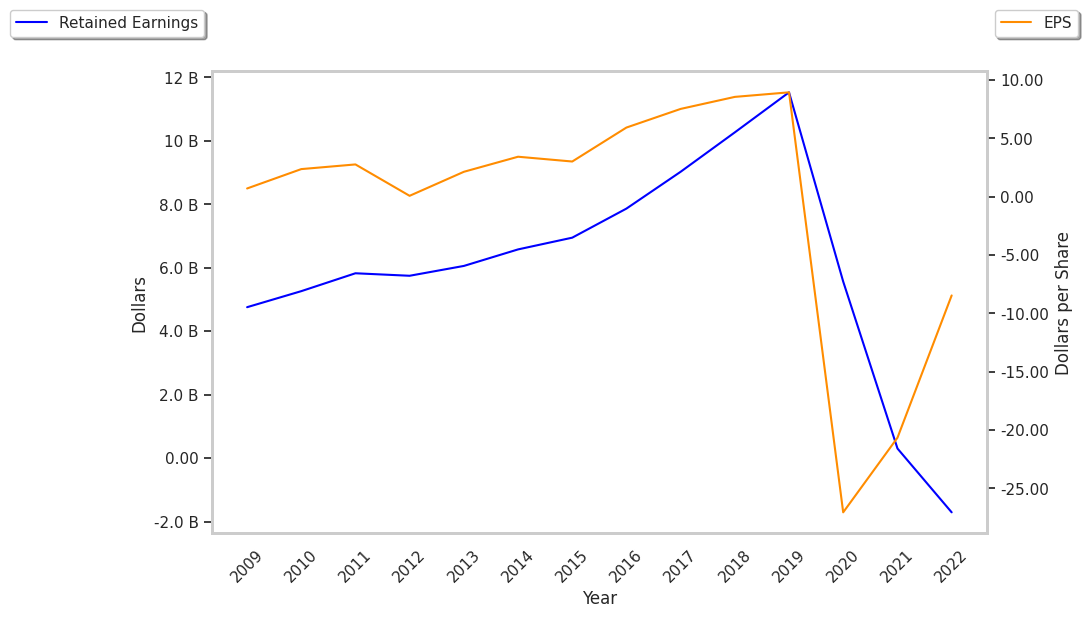One of Wall Street's biggest winners of the day is Royal Caribbean Cruises, a marine shipping company whose shares have climbed 4.1% to a price of $326.9 -- 6.09% below its average analyst target price of $348.09.
The average analyst rating for the stock is buy. RCL outperformed the S&P 500 index by 4.0% during today's afternoon session, and by 79.5% over the last year with a return of 94.5%.
Royal Caribbean Cruises Ltd. operates as a cruise company worldwide. The company is a consumer cyclical company, whose sales and revenues correlate with periods of economic expansion and contraction. The reason behind this is that when the economy is growing, the average consumer has more money to spend on the discretionary (non necessary) products that cyclical consumer companies tend to offer. Consumer cyclical stocks may offer more growth potential than non-cyclical or defensive stocks, but at the expense of higher volatility.
Royal Caribbean Cruises's trailing 12 month P/E ratio is 24.3, based on its trailing EPS of $13.44. The company has a forward P/E ratio of 18.0 according to its forward EPS of $14.29 -- which is an estimate of what its earnings will look like in the next quarter.
As of the third quarter of 2024, the average Price to Earnings (P/E) ratio for US consumer discretionary companies is 20.93, and the S&P 500 has an average of 29.3. The P/E ratio consists in the stock's share price divided by its earnings per share (EPS), representing how much investors are willing to spend for each dollar of the company's earnings. Earnings are the company's revenues minus the cost of goods sold, overhead, and taxes.
Another key to assessing a company's health is to look at its free cash flow, which is calculated on the basis of its total cash flow from operating activities minus its capital expenditures. Capital expenditures are the costs of maintaining fixed assets such as land, buildings, and equipment. From Royal Caribbean Cruises's last four annual reports, we are able to obtain the following rundown of its free cash flow:
| Date Reported | Cash Flow from Operations ($ k) | Capital expenditures ($ k) | Free Cash Flow ($ k) | YoY Growth (%) |
|---|---|---|---|---|
| 2024 | 5,265,000 | 3,268,000 | 1,997,000 | 244.31 |
| 2023 | 4,477,000 | 3,897,000 | 580,000 | 126.02 |
| 2022 | 481,000 | 2,710,000 | -2,229,000 | 45.74 |
| 2021 | -1,878,000 | 2,230,000 | -4,108,000 | 27.89 |
| 2020 | -3,731,653 | 1,965,131 | -5,696,784 | -923.59 |
| 2019 | 3,716,366 | 3,024,663 | 691,703 |
- Average free cash flow: $-1460846833.3
- Average free cash flown growth rate: 23.6 %
- Coefficient of variability (the lower the better): 0.0 %
With its positive cash flow, the company can not only re-invest in its business, it can offer regular returns to its equity investors in the form of dividends. Over the last 12 months, investors in RCL have received an annualized dividend yield of 0.8% on their capital.
Another valuation metric for analyzing a stock is its Price to Book (P/B) Ratio, which consists in its share price divided by its book value per share. The book value refers to the present liquidation value of the company, as if it sold all of its assets and paid off all debts.
Royal Caribbean Cruises's P/B ratio indicates that the market value of the company exceeds its book value by a factor of 9, so the company's assets may be overvalued compared to the average P/B ratio of the Consumer Discretionary sector, which stands at 2.93 as of the third quarter of 2024.
Royal Caribbean Cruises is by most measures overvalued because it has an average P/E ratio, a higher than Average P/B Ratio, and negative cash flows with an upwards trend. The stock has poor growth indicators because it has a an inflated PEG ratio and weak operating margins with a positive growth rate. We hope you enjoyed this overview of RCL's fundamentals.



